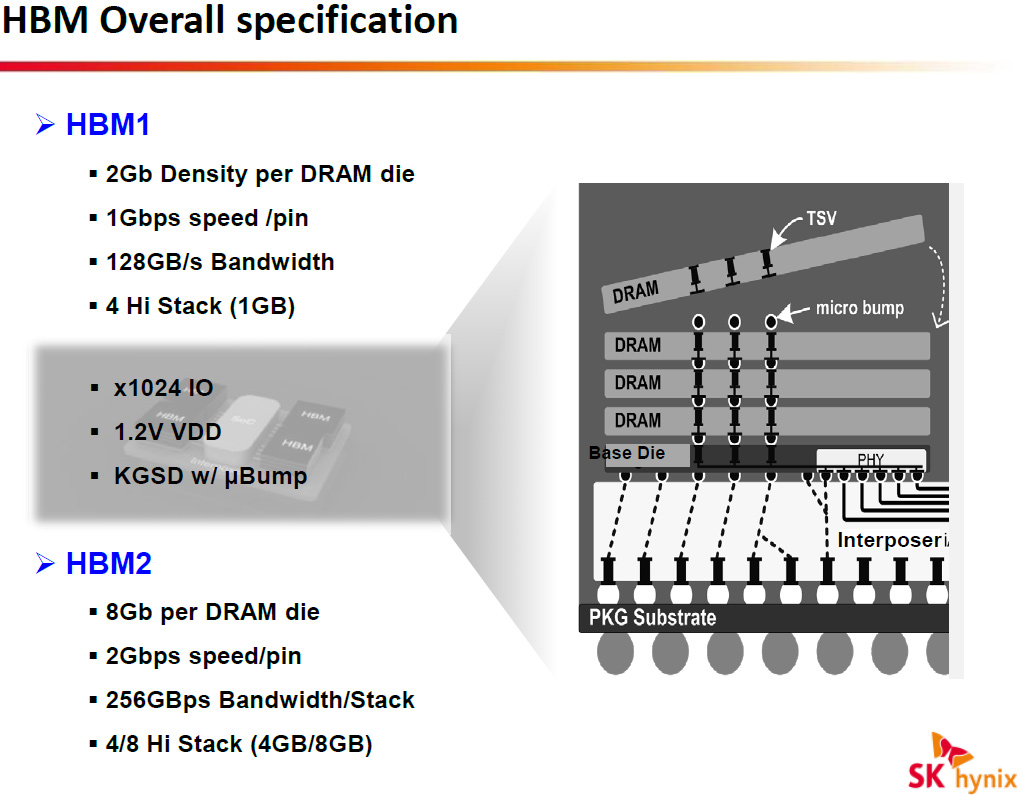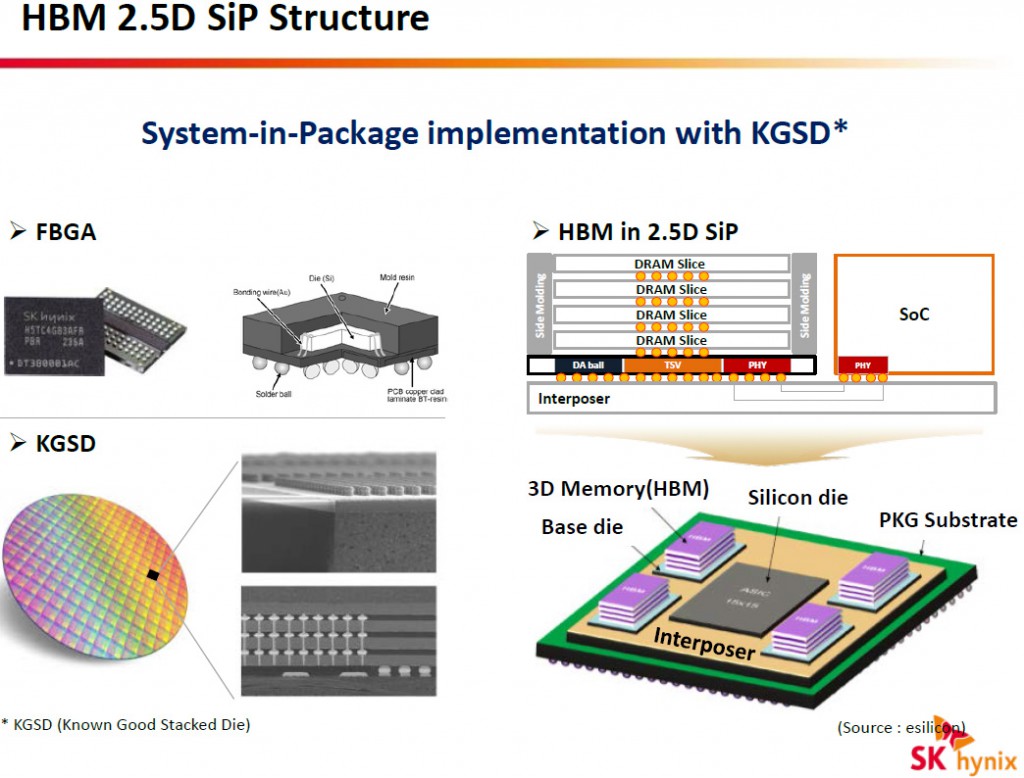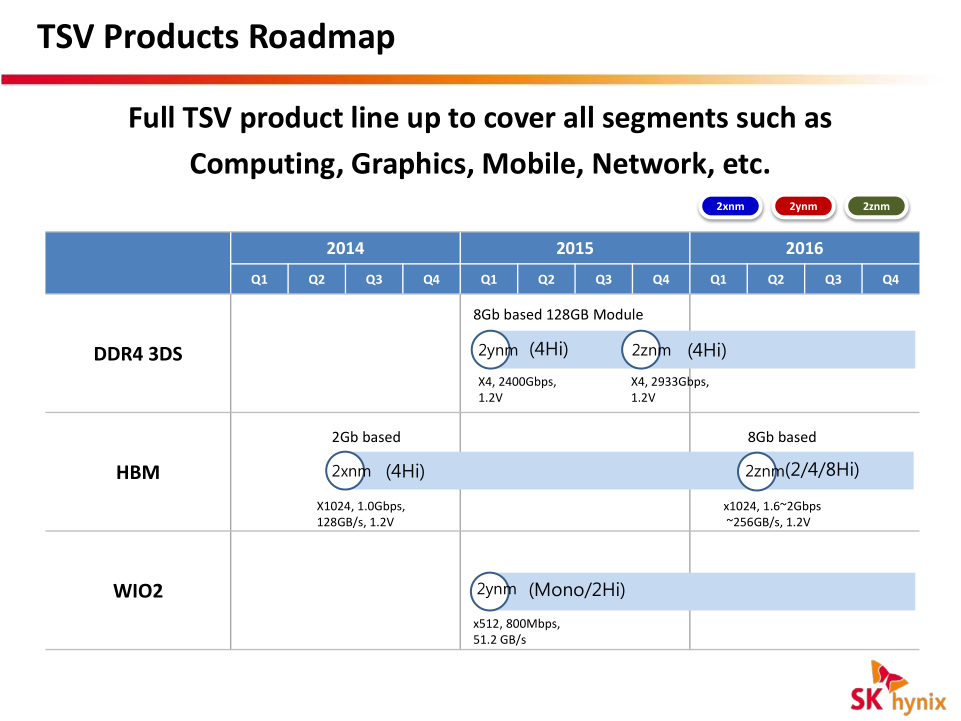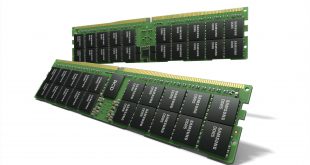SK Hynix has demonstrated a wafer with second-generation high-bandwidth memory (HBM) at the CeBIT trade-show in Hannover, Germany. The new memory chips will emerge on the market sometimes next year and will increase memory bandwidth and memory capacities for graphics cards and other applications.
The first-generation HBM (HBM1) stacks four DRAM dies with two 128-bit channels per die on a base logic die, which results into a memory device with a 1024-bit interface. Each channel supports 1Gb capacities (2Gb per die), features 8 banks and can operate at 1Gb/s – 1.25Gb/s data-rates (1GHz – 1.25GHz effective DDR frequency). As a result, each HBM 4Hi stack (4 high stack) package can provide 1GB capacity and 128GB/s – 160GB/s memory bandwidth. The first-gen HBM stacks are made using 29nm (which SK Hynix calls “2xnm”) process technology. While even the first-generation HBM can enable graphics cards with up to 8GB (with the help of dual-link interposing) of memory and 640GB/s of bandwidth, it will not be enough for the future.
The second-generation HBM (HBM2) greatly expands capabilities of the high-bandwidth memory in general and will evolve in the coming years. The HBM2 uses 8Gb dies with two 128-bit channels featuring 16 banks. Data-rates of the second-generation HBM will increase up to 2Gb/s (2GHz effective DDR frequency). The architecture of the HBM2 will let manufacturers built not only 4Hi stack (4 high stack) packages, but also 2Hi stack and 8Hi stack devices.
In the best-case scenario HBM2 memory chips will feature 8GB capacity (8Hi stack) with 256GB/s bandwidth (2Gb/s data rate, 1024-bit bus). Such HBM2 devices will let developers of graphics processing units to build graphics adapters with 32GB of onboard memory and incredible 1TB/s peak bandwidth. Nvidia Corp. has already announced that its next-generation code-named “Pascal” graphics processing architecture will support up to 32GB of HBM2. Mainstream HBM2 ICs will likely sport 2GB (2Hi stack) or 4GB (4Hi stack) capacities with 1.6Gb/s data rate (204.8GB/s bandwidth per chip), which should be more than enough for high-performance graphics cards in 2016.
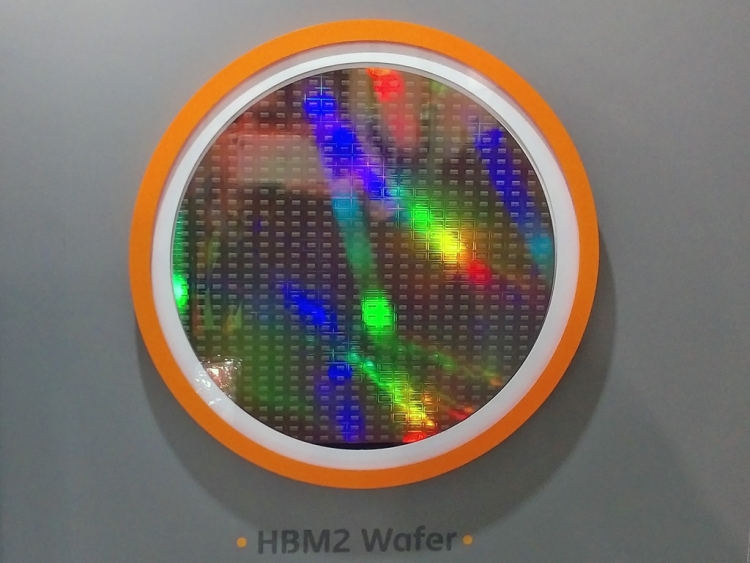
Fudzilla reports that SK Hynix demonstrates a wafer with HBM2 memory ICs [integrated circuits] at CeBIT. Typically, manufacturers of memory can show off future DRAM products years before mass production. According to a roadmap leaked by SemiAccurate some time ago, SK Hynix plans to start production of HBM 2 in early 2016. It is expected that second-gen HBM stacks will be manufactured using 20nm fabrication process (which SK Hynix calls “2znm”).
Going forward the JESD235 standard that powers HBM memory will evolve in terms of clock-rates, die densities (do not expect 16Gb dies any time soon, though) and other ways to improve performance. Extreme memory bandwidth will be required by high-end graphics cards in the coming years as the world transits to ultra-high-definition displays with 4K (3840*2160, 4096*2160) and 5K (5120*2880) resolutions. Even more memory bandwidth will be needed towards the end of the decade when the first displays with 8K (7680*4320) resolutions emerge.
The first graphics cards to use HBM memory will be AMD’s next-generation Radeon R9 390X. The new graphics processing unit from AMD reportedly features 4096 stream processors/64 compute units, 256 texture mapping units and 4096-bit memory bus. The Radeon R9 390X’s memory interface operates at 1.25Gb/s data-rate (1.25GHz effective DDR frequency) and delivers whopping 640GB/s memory bandwidth.
Discuss on our Facebook page, HERE.
KitGuru Says: The HBM looks incredibly good on paper. It provides nice scaling both in terms of bandwidth and capacity for devices like graphics cards. Nonetheless, it is obvious that HBM is not cheap and will never become a standard for system memory.
 KitGuru KitGuru.net – Tech News | Hardware News | Hardware Reviews | IOS | Mobile | Gaming | Graphics Cards
KitGuru KitGuru.net – Tech News | Hardware News | Hardware Reviews | IOS | Mobile | Gaming | Graphics Cards


